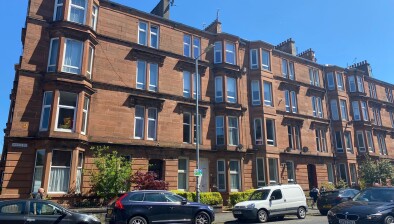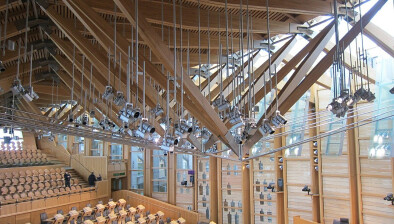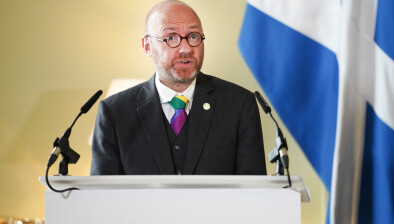Transitional measures proposed as private rent cap ends

Tenants’ rights minister Patrick Harvie
Regulations to introduce an arbitration scheme that aims to avoid excessive private rent increases when the current emergency rent cap regulations come to an end have been laid in the Scottish Parliament.
Measures in the Cost of Living (Tenant Protection) (Scotland) Act which implemented a rent cap are due to expire on 31 March 2024.
From 1 April onwards, subject to parliamentary approval, the process for rent adjudication will temporarily be modified for one year.
Any tenant who wishes to dispute a rent increase notice can apply for rent adjudication. In such cases, Rent Service Scotland or the First-tier Tribunal will set rent based on the lowest of the following three figures:
- the open market rate
- the rent requested by the landlord
- and a comparator based on the difference between the market rate and current rent
Tenants’ rights minister Patrick Harvie said: “Our emergency legislation has led the way in the UK in capping in-tenancy rent increases, protecting tenants across Scotland from the worst impacts of the cost-of-living crisis. However, Parliament set a final deadline for these temporary protections to come to an end from 1 April 2024.
“From 1 April we are proposing temporary changes to the way rents are decided when tenants challenge a rent increase to provide a level of protection for private tenants which remains far greater than anywhere else in the UK. It will also enable landlords to react to an increase in costs and reinvest in our private rented sector.
“At the same time, we are committed to bringing in a long-term system of rent controls and creating new rights for tenants through our forthcoming Housing Bill.”
John Blackwood, chief executive of the Scottish Association of Landlords, said: “While the Scottish Government has finally recognised the need and benefits of landlords investing in their properties, their actions and rhetoric to date have already significantly harmed the ability and desire for many to do so.
“The rent freeze exacerbated Scotland’s housing crisis, making rented properties no longer viable for many landlords who have chosen to sell. This has decreased supply and only increased costs for tenants and means the Scottish Government has a long way to go to rebuild confidence and secure the kind of investment that is needed to help solve Scotland’s housing emergency.
“We are keen to work with the Scottish Government, social housing and other providers to develop a long-term plan which encourages investment across Scotland’s housing sector, increases supply and provides people and families with the right kind of choice for a home that suits their needs and budget.”
David Alexander, the chief executive officer of DJ Alexander Scotland, added: “Given that the consultation for this proposed legislation only ended nine days ago it seems extraordinary that it has already been given the green light. Less than a fortnight to analyse the sectors’ concerns and amend the legislation appropriately seems remarkably efficient although no changes have been made and this appears to be identical to the consultation.
“Rents have been rising at a higher rate than usual since the introduction of the October 2022 Cost of Living Act. Continuing to try and control the market through these proposals seems to be an overly complicated and laborious action. That rents will be set a maximum of 6% up to market value is also unusual given that historically rents in Scotland have risen at a lower than this over the last 20 years. If you had said two years ago to landlords that they could only increase rents by 6% a year they would have bitten your hand off.
“My concern is that the group who have suffered the most from this policy are the tenants. Demand has soared as restrictions have applied and rents have increased. We have hundreds of applications for properties in Edinburgh and Glasgow and this situation has got worse over the last year. The only solution to reducing rents is to increase supply through substantially more social housing and encouraging greater investment from investors and landlords in the private rented sector. There is no other workable answer to resolve Scotland’s growing housing emergency.”
The temporary rent cap and eviction moratorium protections brought in by the Cost of Living (Tenant Protection) Act 2022 were originally due to expire on 31 March 2023 before Scottish ministers voted to extend the powers available to them until 30 September 2023, and again until 31 March 2024.
This final date is built into the legislation and cannot be extended further. Until then, private rents are capped at 3% - or 6% in exceptional circumstances. The protection applies to all applicable Rent Increase Notices issued on or before 31 March 2024. The extra eviction protections will also come to an end at this point.
If a tenant is concerned about the level of a proposed rent increase, they can raise it with their landlord or agent and apply to a rent officer at Rent Service Scotland, or to the First-tier Tribunal if applicable, for a rent adjudication.
The regulations would temporarily modify the rent adjudication process for 12 months so that on making a decision on adjudication, the rent officer would use a rent taper formula which can be summarised as below:
If the gap between the market rent and the current rent is 6% or less, then the landlord can increase the rent by the proposed amount, as long as this is not more than the market level.
If the gap between the market rent and the current rent is more than 6%, the landlord can increase the rent by 6% plus an additional 0.33% for each percent that the gap between the current rent and market rent exceeds 6%, as per the formula set out in the Rent Adjudication (Temporary Modifications) (Scotland) Regulations 2024. However, the total rent increase cannot exceed 12% of the current rent.
Both cases are also subject to the requirement that RSS and the FTT cannot set a higher rent than that requested by the landlord.
Illustrative worked examples of the approach that would apply under the Rent Adjudication (Temporary Modifications) (Scotland) Regulations 2024 have been laid out below. They present different hypothetical scenarios of rent increases under the proposed approach, illustrating how the taper approach would apply where the difference between current rent and open market rent is between 6% and 24%. Each example considers what would happen were a tenant to refer a rent increase for adjudication.
Example 1
A landlord sets a new rent which is 5% higher than the current rent. The landlord believes the difference between current rent and the open market rent is 5%. Rent increases up to and including 6% are permitted, as long as the new rent does not exceed the open market value. If the tenant took the case to rent adjudication and the open market rent value was confirmed at this 5% level or above, then the rent increase of 5% would be approved. If the rent adjudication concludes the open market rent is lower than the rent proposed by the landlord, rent would be set at the open market level.
Example 2
A landlord sets a new rent which is 8% higher than the current rent. The landlord believes this 8% increase would bring the rent up to the open market value. Rent increases are subject to the taper approach if the proposed rent increase is above 6% of overall rent. If the gap between the current rent and open market rent is 8%, then the rent increase would be capped at an increase of 6.7% higher than existing rent.
Example 3
A landlord sets a new rent which would be 15% higher than the current rent. The landlord believes the open market value is 25% above the current rent. Rents cannot rise by more than 12%. If the gap between current rent and open market rent is more than 24%, rent increases are capped at 12% higher than existing rent. If the tenant took the case to rent adjudication and it was confirmed that the open market value was 24% or higher than the current rent, then the rent increase would be set at an increase of 12% higher than existing rent.
Example 4
A landlord sets a new rent which is 15% higher than the current rent. The landlord believes the open market value is 15% higher than the current rent. Rents cannot rise by more than 12%. If the gap between the current rent and the open market rent is 15%, then the rent taper formula is applied and the rent increase is capped at 9% higher than existing rent. If the tenant took the case to rent adjudication and it was confirmed that the open market rent was 15% higher than the current rent, then the allowable rent increase would be set at 9% higher than existing rent.








